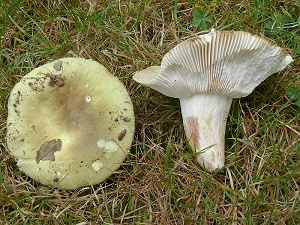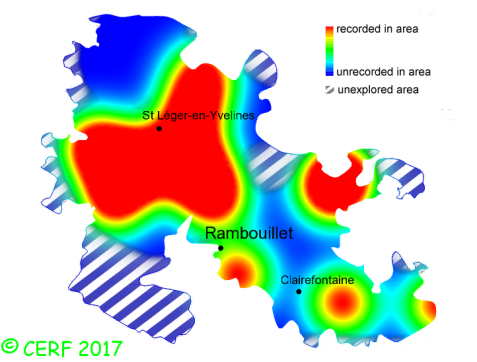| Russula heterophylla (Fr.:Fr.) Fr. |
|
|
|
|
|
|
The cap is with variable shades of green : olive green to green yellowish; its margin is smooth. The cap surface is smooth, not viscid nor sticky. The stem is white washed with rust towards top, without ring. The flesh is unchanging; its taste is mild; the odour is not distinctive; its texture is grainy (breaking like a chalk stick). The gills are white, free, crowded . The spore print is white. This species is mycorrhizal. It grows on the ground, in broad-leaved and coniferous woods, on a rather acid soil. The fruiting period takes place from July to November.
Chemical tests : flesh becoming bright salmon pink when in contact with iron sulphate; positive reaction to Ga´ac (bright blue); faint purple reaction of cap cystidia to sulpho-vanillin. Distinctive features : white flesh; rusty stains on the cap bites, gills or stem; whitish gills, greasy to the touch, tending to fuse close to the stem Russula heterophylla is infrequent and widely present in the forest of Rambouillet, and is occasional, more generally speaking . | ||
|
page updated on 14/01/18

